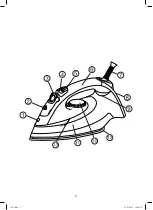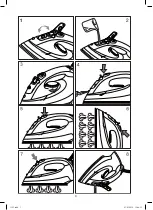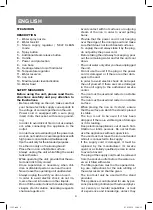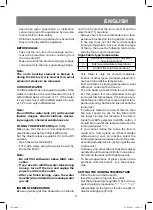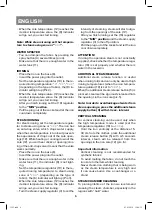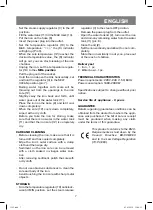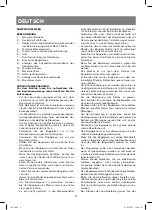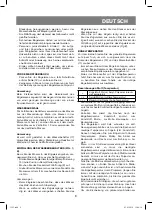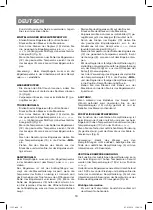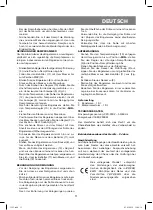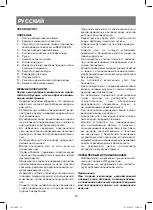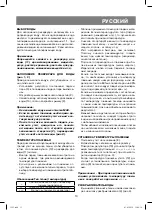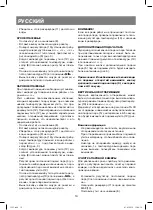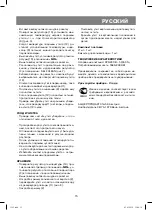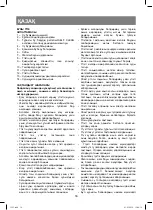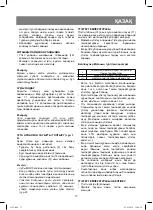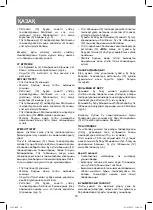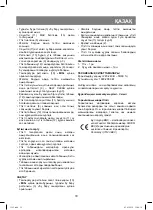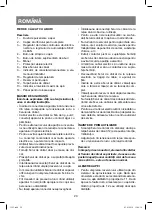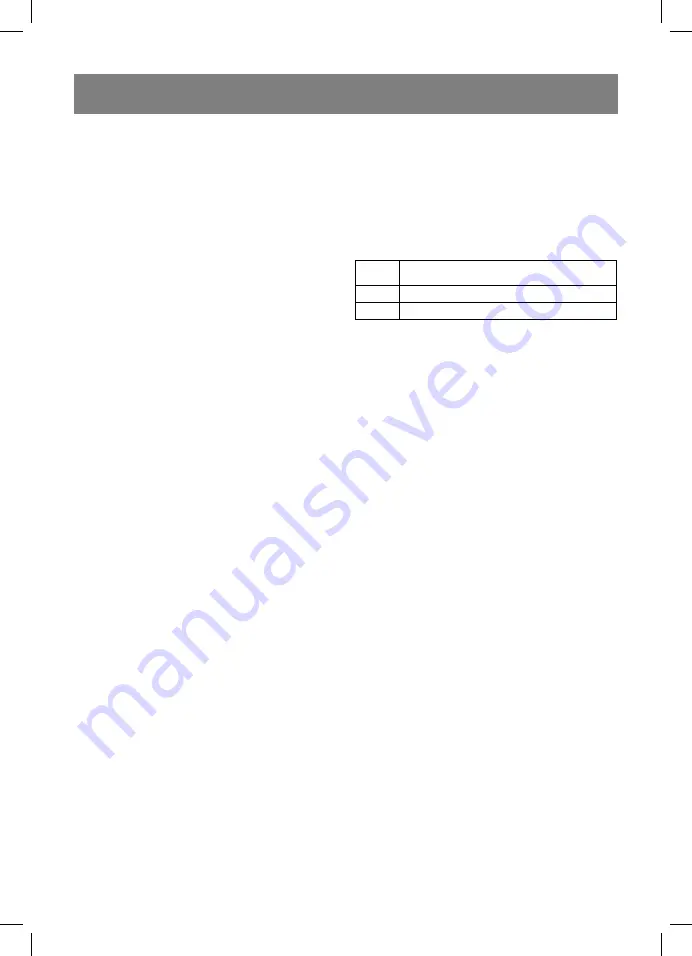
have been given supervision or instruction
concerning use of the appliance by a person
responsible for their safety
• Children should be supervised to ensure that
they do not play with the appliance
BEFORE USAGE
• Take out the iron from the package and re-
move the protective cartoon covering from
the iron sole (12).
• Make sure that the electrical supply voltage
corresponds to the iron’s operating voltage.
Note:
The iron’s heating element is broken in
during the first use; it is normal for a small
amount of smoke to be released.
CHOICE OF WATER
To fill the water tank use regular tap water. If the
water is hard then it is recommended to mix it
with distilled water at a ratio of 1:1, if the water
is very hard, mix it with distilled water at a ratio
of 1:2 or use only distilled water.
Note:
Do not fill the water tank (11) with scented
liquids, vinegar, starch solutions, descal-
ing reagents, chemical substances etc.
FILLING THE WATER TANK (pic. 1, 2)
Make sure that the iron is disconnected from
electrical power before filling it with water.
Set the steam release regulator (3) to the Off
position.
• Open the water tank lid (2).
• Fill it with water using the water bowl (14).
Close the lid (2).
Note:
• Do not fill it with water above MAX. indi-
cation.
• If you need to refill the water tank during
ironing, turn off the iron and unplug the
power cord from the outlet.
• After you finish ironing, open the water
tank lid (2) and drain the remaining water
(pic.8).
IRONING TEMPERATURE
Before operating test the heated iron on the old
cloth to be sure that the iron sole (12) and the
water tank (11) are clean.
• Always check the recommended iron tem-
perature indicated on the tag before ironing.
• If the tag does not list the recommended
ironing temperature, but you know the type
of fabric, then use the following table to de-
termine the proper temperature.
Signs Fabric type/temperature
•
Synthetics, nylon, acryl, polyester
(low temperature)
••
Silk/wool (medium temperature)
•••
Cotton/flax (high temperature)
•
This table is only for smooth materials.
Fabrics of other types (crimped, raised etc.)
are best ironed at low temperature.
• First sort items by ironing temperature: wool
with wool, cotton with cotton etc.
• The iron heats up faster than is cools down.
For this reason it is recommended to begin
ironing at low temperature (for instance syn-
thetic fabrics). After that, move to higher tem-
perature ironing. Cotton and linens should be
ironed last.
• If an item is made from a mix of fabrics, then
the iron should be set for the fabric with
the lowest ironing (for instance if an item is
made from 60% polyester and 40% cotton, it
should be ironed at the temperature used for
ironing polyester “
•
”).
• If you cannot define the fabric the item is
made from, find a place on it that is hidden
while wearing and, on practice select the
ironing temperature (always start at the low-
est and gradually raise it until you get the de-
sired result.)
• Corduroy and other fabrics that start glossy
quickly should be ironed strictly in one direc-
tion (along the lines) with slight pressure.
• To avoid appearance of glossy spots on the
synthetic and silk fabrics, iron them back-
side.
SETTING THE IRONING TEMPERATURE
• Place the iron on the base (8).
• Insert the power plug into the outlet.
• Set the temperature regulator (10) to the re-
quired ironing temperature: “
•
”, “
••
”, “
•••
”
(depending on the type of fabric), the (9) in-
dicator will light up (Pic.3).
5
ENGLISH
1255.indd 5
1255.indd 5
03.03.2010 15:40:15
03.03.2010 15:40:15


